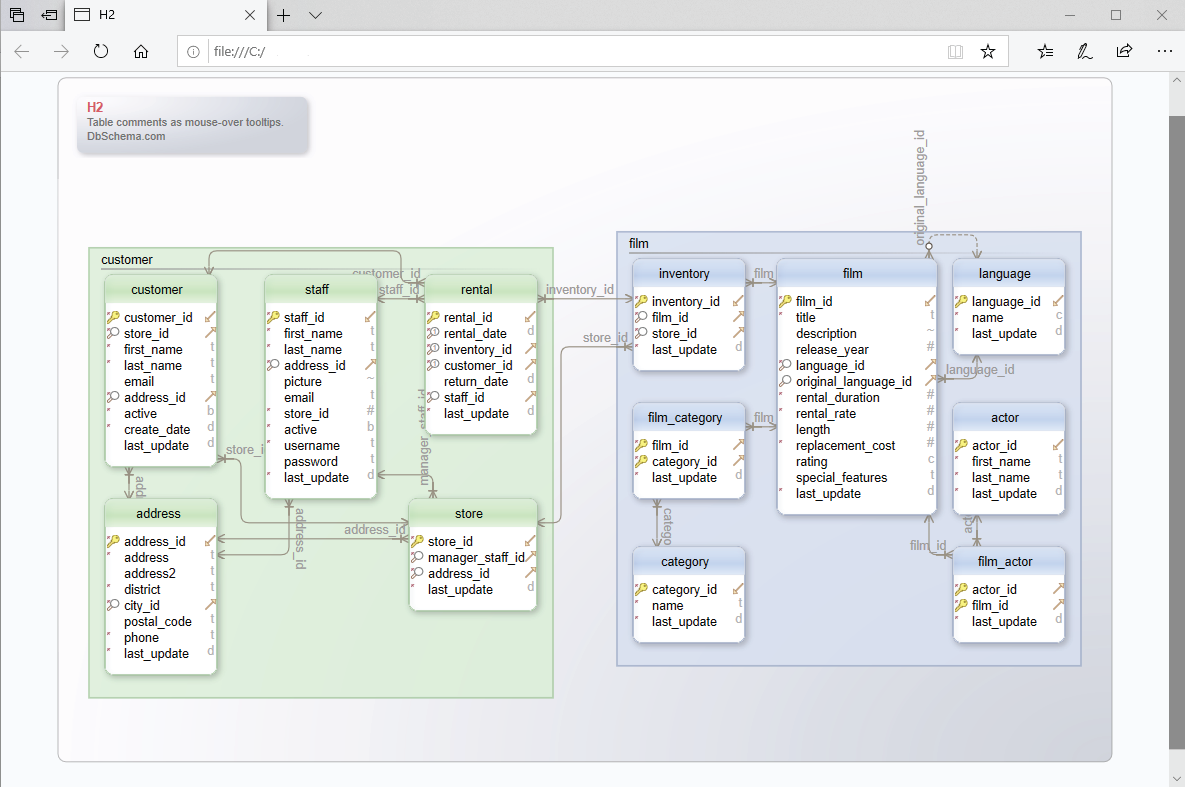

- DBSCHEMA GENERATE SQL HOW TO
- DBSCHEMA GENERATE SQL INSTALL
- DBSCHEMA GENERATE SQL GENERATOR
- DBSCHEMA GENERATE SQL UPGRADE
You can also launch Cloud Shell in a separate browser tab by going to. To open the Cloud Shell, select Try it from the upper right corner of a code block. It has common Azure tools preinstalled and configured to use with your account. The Azure Cloud Shell is a free interactive shell that you can use to run the steps in this article.
DBSCHEMA GENERATE SQL UPGRADE
To upgrade to the latest version, run az upgrade. Run az version to find the version and dependent libraries that are installed. For more information about extensions, see Use extensions with the Azure CLI.
DBSCHEMA GENERATE SQL INSTALL
When you're prompted, install the Azure CLI extension on first use. For other sign-in options, see Sign in with the Azure CLI. To finish the authentication process, follow the steps displayed in your terminal. If you're using a local installation, sign in to the Azure CLI by using the az login command.


DBSCHEMA GENERATE SQL HOW TO
For more information, see How to run the Azure CLI in a Docker container. If you're running on Windows or macOS, consider running Azure CLI in a Docker container. If you prefer to run CLI reference commands locally, install the Azure CLI. For more information, see Quickstart for Bash in Azure Cloud Shell. Use the Bash environment in Azure Cloud Shell. If you don't have an Azure subscription, create an Azure free account before you begin. After the script has been successfully run, the database can be accessed from all Azure services and the allowed IP address range. Here you’ll see some info about Flatlogic plans and some points from the roadmap.This Azure CLI script example creates a single database in Azure SQL Database and configures a server-level firewall rule. Also you can add one-to-many (relation one) and many-to-many (relation many) relation types if such were not discovered automatically.įlatlogic schema editor also allows you to extend your existing DB schema while keeping all the data intact by applying our generated migrations feature.Įnjoy this new feature and model Admin web apps for your existing database literally in one click!Ĭlick here to learn more about upcoming features. We recommend that you choose “ Structure only, no data” mode when dumping the SQL from your database otherwise the data dump will result in unnecessary volume uploads which sometimes could be huge and even lead to upload failure.Īfter the successful file upload and schema import, the schema editor allows you to review and edit the schema, and correct names and column types in case those were not identified correctly by the SQL dump parser. SQL import is invoked by simply uploading the SQL dump file, literally in one click. If the “users” table already exists in the imported DB, the column lists of the two tables are merged. “users” table is automatically added to the DB model to preserve web app user management functionality. The feature supports both Postgres and MySQL dialects and identifies tables and column types, also trying to discover relations based on index, reference and constraint information. To eliminate this obstacle and increase our users’ satisfaction, we are introducing a new platform feature: Creating a web app from an SQL dump. We received a lot of requests from our users who had already modelled DB schemas and found it inconvenient to manually remodel the schema in Flatlogic schema editor.
DBSCHEMA GENERATE SQL GENERATOR
Previously, Flatlogic web app generator allowed you to model a database schema from scratch.

Check out our release notes to learn more about our latest product enhancements. Hello! Flatlogic has added one more important feature: ready-made web application scheme integration.


 0 kommentar(er)
0 kommentar(er)
